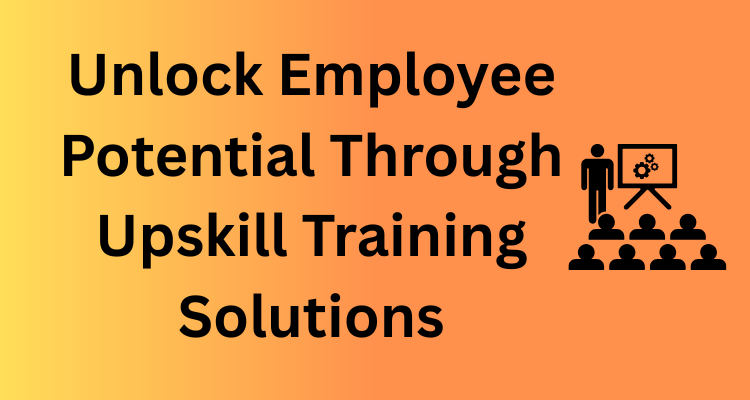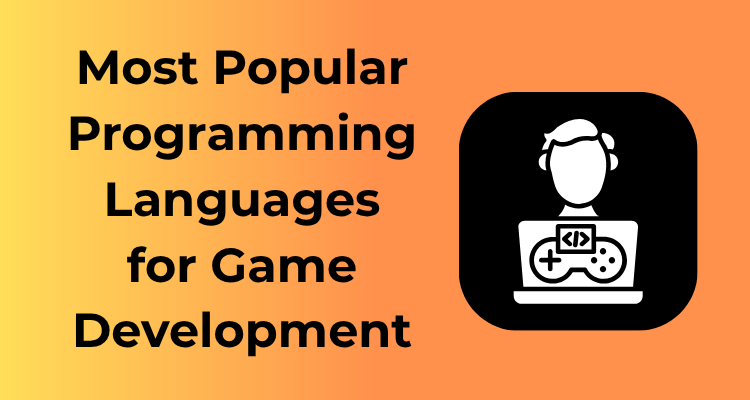Let’s face it – the world is changing fast, and so are the skillsets required for jobs. From technological advancements to shifting industry demands, skill requirements are no longer static. That’s where the idea of a skills gap comes in. Simply put, this refers to the mismatch between the skills your workforce currently has and the ones needed to achieve your organization’s goals. Implementing a well-structured training program is key to bridging this gap—it’s not just a corporate buzzword but an essential step to keep your business competitive and your team motivated to grow.
Why Does Identifying the Skills Gap Matter?
Picture this: your organization is like a boat. The skills gap is the leak. If you don’t find it and patch it up quickly, you risk sinking. Dramatic? Maybe! But the consequences of ignoring these gaps can include missed growth opportunities, reduced productivity, and your employees feeling like they’ve been thrown off the ship.
Here are three ways identifying the skills gap positively impacts organizations:
- Stay Competitive: Industries evolve, and organizations need to adapt quickly. By identifying skill gaps, you’re better prepared to pivot when challenges like automation or market changes arise.
- Boost Employee Engagement: Employees feel valued when their training aligns with both their career goals and company objectives. Who doesn’t like to feel like a superhero saving the day by mastering new skills?
- Enhance Workforce Efficiency: Teams with the right tools (and by tools, we mean skills) perform their jobs more effectively. This means less time reinventing the wheel and more time driving innovation.
How to Identify a Skills Gap
OK, so now that we know why a skills gap matters, how do we actually identify it? It may sound daunting, but trust us, it’s achievable if you take a few straightforward steps:
- Start with Job Descriptions: Dust off those job descriptions and ensure they reflect the current and future needs of your company. Do they demand skills that your team hasn’t mastered yet? That’s clue number one!
- Ask your Employees: Here’s where good communication comes into play. Talk to your team. Surveys, one-on-one check-ins, or even casual coffee chats can provide insights on where they feel unprepared or what skills they’d love to develop.
- Benchmark against Industry Standards: Research is your best friend here. Look at competitors or industry leaders to identify emerging skills or tools your organization might be missing.
- Use Assessments: Tools like skill assessments or performance reviews can highlight areas where employees excel or struggle. Data-backed insights are an absolute game-changer!
The Role of Flexible Training in Modern Workplaces

Let’s face it: the modern workplace is growing and evolving faster than ever. Hybrid schedules, remote teams, new technologies—everything is driving change at an unprecedented pace. So, how do organizations ensure their teams are not just keeping up but also thriving? The answer is simple yet powerful: flexible training.
Why Flexibility is a Gamechanger
Gone are the days when employees could dedicate a week to sit in a static, one-size-fits-all training seminar. Workplaces now demand employee development programs that can adapt, just like their teams do. Here’s why flexible training is the MVP:
- Caters to Varied Learning Styles: Some people love diving into long, detailed courses, while others prefer quick, hands-on sessions. Flexible training allows everyone to learn in their preferred way.
- Fits Busy Schedules: Employees are juggling projects, meetings, and personal commitments. Offering training that can fit into their packed calendars makes it possible to upskill without overwhelming them.
- Encourages Continuous Learning: Flexibility enables ongoing skill-building, rather than a one-and-done approach. With this setup, teams are always prepared for new challenges.
How Modern Companies Are Embracing Flexible Training
Companies that prioritize adaptable training programs aren’t just trendy—they’re smart. Here are some practical innovations being adopted:
- Microlearning Modules: Instead of lengthy courses, employees can access bite-sized training sessions that take 5-15 minutes. This approach ensures participation without disrupting their flow of work.
- E-learning Platforms: Cloud-based training tools make it easy for teams to learn wherever they are. From onboarding to advanced skill-building, these platforms often offer courses that employees can complete at their own pace.
- Blended Learning: Combining in-person workshops with online resources creates a hybrid experience that maximizes learning retention. It’s kind of like having the best of both worlds.
- On-the-Job Training: Learning while actively working—whether it’s coaching, shadowing, or real-time feedback—ensures relevance to day-to-day tasks while building confidence.
Making Flexible Training Work for You
Skeptical about how to actually implement this in your workplace? Don’t worry, we’ve got you covered. Here’s a quick action plan:
- Identify Goals: Tailor training to meet specific organizational and team objectives. What skills are most valuable now and in the coming years?
- Use Tools: Leverage learning management systems (LMS) to track progress and make training accessible to everyone.
- Collect Feedback: Regularly ask employees what’s working and what isn’t. Adjustments will keep things both relevant and engaging.
- Measure Impact: Okay, we’re not spilling into the next section here, but yes—be sure to track results and build upon success!
Choosing Methods that Fit Your Organization’s Needs

Finding the right training methods for your organization can sometimes feel like trying to solve a giant puzzle. There’s no universal “one-size-fits-all” solution here, and that’s a good thing! Your organization is unique, with its own culture, goals, and people. Choosing the best methods for skill development starts with understanding what makes your workplace tick and focusing on approaches that align with your specific needs.
Start With a Clear Diagnosis
Before diving into new training methods, pause and evaluate what your organization really needs. Ask yourself:
- What skills are missing, and who needs them?
- Are these long-term gaps or immediate needs?
- What does success look like for your team after training?
Getting clarity on these questions is like laying the foundation for a sturdy house—you can’t build anything valuable on shaky ground.
Consider Different Learning Styles
Not everyone in your organization learns in the same way. While some employees may thrive in online modules they can tackle at their own pace, others might learn best in structured, in-person workshops. It’s worth offering a combination of learning formats to keep things inclusive and effective.
For example:
- “Visual learners” prefer methods like videos, charts, and diagrams.
- “Auditory learners” benefit from podcasts, webinars, or group discussions.
- “Kinesthetic learners” thrive through hands-on experiences, simulations, or role-playing activities.
By diversifying your training methods, you’re increasing the chances that everyone on your team has an opportunity to grow.
Blend Traditional and Innovative Methods
Traditional methods like classroom training and mentorships still hold value in many environments, but modern workplaces call for a more dynamic approach. Blended learning—combining traditional techniques with innovative tools like eLearning platforms or virtual reality training—can provide the perfect mix of structure and self-paced exploration.
For example, a manufacturing company could pair hands-on safety workshops with virtual reality simulations, allowing employees to practice tricky scenarios in a risk-free environment. Meanwhile, a tech company might offer microlearning sessions on coding techniques alongside one-on-one coaching from senior developers.
Tailor to Your Industry and Scale
The ideal approach also depends on your industry. A small, tight-knit team in a marketing firm might thrive with group brainstorming workshops and regular knowledge-sharing sessions. On the flip side, a global corporation with dispersed teams needs scalable, cloud-based solutions (think online courses and interactive webinars) to bridge the distance gap.
Keep Budget and Time in Mind
Let’s face it, budgets and schedules matter. The goal is to maximize impact without stretching resources thin. If your organization is tighter on time or budget, consider starting small with techniques like on-the-job training or peer mentoring, which are often cost-effective and can deliver immediate benefits.
Evaluate and Iterate
Once you’ve selected a method, don’t forget the importance of evaluation. Regularly gather feedback from employees to see if the methods are truly helping them grow. If something isn’t working, don’t hesitate to revisit and tweak your approach. Continuous improvement is part of the process, and being flexible is key.
Ultimately, the best training methods are those that fit your organization’s needs, empower your workforce, and are adaptable to change. Think of it as crafting a tailored suit rather than grabbing whatever’s on the rack. With the right fit, your organization will not only fill skill gaps but also thrive in the ever-changing professional landscape.
Measuring the Impact of Workforce Development

So, you’ve set up your workforce development initiatives – great! But how do you know if all that effort is actually paying off? Measuring the impact of workforce development can seem overwhelming, but with the right approach, you can turn it into a rewarding process that ensures your team is growing and thriving. Let’s break it down!
Why Measure Workforce Development?
Tracking impacts isn’t just about numbers and KPIs – it’s about seeing the everyday transformation in your team. Effective measurement can help you:
- Pinpoint strong returns: Are employees learning skills that directly benefit their roles?
- Identify areas for improvement: What’s working, and where are the gaps?
- Justify your investment: Whether you need to report to upper management or allocate future budgets, solid data makes your case stronger.
Start with Clear Goals
First things first: define what success looks like for your program. Are you aiming for an increase in productivity, better retention rates, or upskilled employees ready for leadership? Clear, measurable goals will keep your evaluation efforts sharp.
For example, if your goal is to improve customer satisfaction through training your customer service team, your measurement should include before-and-after customer survey scores. Simple, right?
Choose Your Metrics
Metrics are the backbone of any measurement process. Here’s a mix of qualitative and quantitative options to consider:
- Employee performance: Have productivity, task accuracy, or project completion times improved?
- Engagement levels: Are employees more motivated or interested post-training?
- Retention rates: Reductions in turnover often indicate satisfied, well-trained staff.
- Customer satisfaction: Has your external stakeholder experience reflected improvements in your workforce?
- Knowledge assessments: Post-training tests can show how much your team has learned.
The key is to align your metrics with your goals. Not everything has to be hard data – qualitative insights matter just as much. Regular feedback from employees and supervisors can give you a clearer picture of how they’re adapting to the development programs.
Regular Check-ins > One-Time Assessments
Here’s a little secret: measuring impact is not a one-and-done situation. Regular reviews help you adjust and fine-tune your approach over time. Consider setting up check-ins every quarter or after major training sessions to monitor progress.
Pro tip: Track not just the immediate effects, but the long-term shifts as well. Some programs may take months to yield visible changes, and that’s okay!
The ROI of Workforce Development
Return on investment (ROI) is the magic word here. Convincing stakeholders about the value of development rests on successfully showing how these efforts translate into tangible benefits for your organization. Here’s an easy way to approach it:
- Calculate the costs: Include training materials, technology, and time invested.
- Weigh them against improvements: Use metrics like increased productivity, reduced error rates, or higher sales numbers.
- Give context: Use case studies or examples to illustrate the success story, if qualitative inputs are hard to quantify.
Industry Trends and Their Influence on Training Needs
Hello there! Let’s have a chat about something pretty exciting that has been reshaping how organizations tackle training needs—industry trends. No need to grab your magnifying glass for this; I’ve got the details laid out for you in a way that’s easy to follow and, dare I say, quite fun!
Why Pay Attention to Industry Trends?
Trends act like a compass for the modern workplace. Think of them as indicators of where the industry ship is sailing. By staying tuned to these updates, companies can be proactive rather than reactive. Sounds good, right?
Ignoring industry trends is a little like planning a picnic without ever checking the weather—you might get lucky, or you might end up soaked. The point: understanding trends ensures you’re preparing your workforce for the opportunities and challenges of tomorrow.
Current Trends Shaping Workforce Training Needs
Alright, let’s dig into what’s hot in the workforce development world. Below, I’ve outlined key trends that are influencing training strategies all over:
- Reskilling and Upskilling Surge: As automation and AI technologies continue to evolve, some roles are being replaced, while others require new skills altogether. Think of it like upgrading your phone—your team’s skills need updates too!
- Remote Work Realities: With more companies adopting remote or hybrid work models, training programs have shifted to incorporate virtual learning solutions. Digital fluency is becoming non-negotiable.
- Diversity, Equity, and Inclusion (DEI): Organizations are increasingly embedding DEI training to foster more inclusive workplaces. These programs not only boost morale but also improve collaboration and innovation.
- Data-Driven Decision Making: Companies are learning to leverage workforce analytics to identify skills gaps and forecast their training needs more effectively. If you haven’t hopped on the data train, what are you waiting for?
- Focus on Soft Skills: Emotional intelligence, collaboration, adaptability—the demand for soft skills is off the charts! As automation takes care of repetitive tasks, human-centric skills become golden.
How to Stay Ahead of the Curve
Let’s talk strategy. Here’s how you can ensure you’re not caught off guard by the next big thing:
- Monitor Industry Reports: Reports from consulting firms, industry associations, and reputable publications offer excellent insights into what’s coming next. Keep a finger on the pulse!
- Engage with Thought Leaders: Follow industry experts on LinkedIn or attend webinars where cutting-edge strategies are discussed. It’s like having a sneak peek into the future.
- Conduct Regular Skill Audits: Periodically assess where your staff stands on key competencies. This way, you’ll know exactly how to allocate training resources when trends shift.
- Collaborate with Training Providers: Partnering with specialized educational platforms or vendors ensures you have access to the latest tools and methodologies. Don’t DIY everything!
Integrating Technology for Smarter Skill-Building
Isn’t it amazing how technology seems to have its hand in almost every aspect of our lives these days? From how we shop to how we learn, technology is changing the way we do things – and workforce development is no exception. Integrating technology into your training programs is not only a smart move but also an essential one if you want to keep your team future-ready. Let’s dive into what it looks like to leverage technology for skill-building and why it’s worth your time, effort, and investment.
Why Technology is a Game-Changer for Training
Gone are the days when training meant endless PowerPoint slides and monotonous classroom sessions. Technology breathes life into workforce development by making it:
- Accessible: E-learning platforms and mobile apps make training available anytime and anywhere. Whether your team is in the office or working remotely, they can access the materials they need when it suits them.
- Engaging: Interactive modules, videos, and gamification elements make learning not just educational but also entertaining. (Who doesn’t love a little friendly competition in a game-based learning session?)
- Personalized: Learning management systems (LMS) can tailor training paths to each employee’s role, goals, and current skills. It’s all about getting the right training to the right person at the right time.
Tools and Platforms to Explore
Tapping into technology doesn’t have to feel overwhelming. Start by exploring these tools to see which fits your organization best:
- Learning Management Systems (LMS): Think of LMS as the backbone of your training program. Platforms like Moodle, Coursera for Business, or TalentLMS are excellent for organizing content, tracking progress, and delivering courses.
- Microlearning platforms: Create bite-sized, targeted trainings designed for quick consumption. Tools like EdApp or Axonify allow learners to engage in small doses, making it easier to retain information.
- VR and AR for experiential learning: Industries like manufacturing and healthcare can benefit from virtual reality (VR) and augmented reality (AR) technology. Imagine teaching someone to fix a complex machine on a simulated 3D model – pretty cool, right?
- Collaboration software: Platforms like Slack, Miro, or Teams can encourage peer-to-peer learning through shared resources, forums, and live discussions.
Making Data Work For You
One of the biggest perks of using technology in training is *measurability*. Analytics tools in LMS and other platforms give you insights into participation rates, module completion, and even areas where employees might be struggling. Use this data to tweak and improve your programs over time.
For example, if you notice a module consistently has low success rates, it might be worth revisiting the content or format. The ability to continuously optimize your training based on data ensures it’s always hitting the mark.
Tips for Starting the Integration
If you’re eager to jump on the tech train but aren’t sure where to start, here are a few expert suggestions:
- Start small – pilot a program with one team to see what works and what doesn’t.
- Get buy-in – involve your employees in the process and explain the “why” behind the tools you’re introducing.
- Focus on ease-of-use – prioritize platforms that are intuitive; nobody has time for clunky interfaces.
Avoiding Common Mistakes in Training Efforts
Let’s face it: workforce training is no easy feat. Even with the best intentions, organizations often stumble into avoidable traps that minimize the impact of their training programs. But the good news? By identifying and sidestepping these pitfalls, you can set your team up for success and make the most of your development strategies.
1. One-Size-Fits-All Training: A Recipe for Disengagement
Imagine trying to wear an outfit that doesn’t fit—it’s uncomfortable and unproductive, right? The same goes for training programs. One of the most common mistakes is offering generic, one-size-fits-all solutions that don’t address the unique needs of individuals on your team.
How to avoid it: Personalized, role-specific training is key. Your organization likely has employees at various experience levels, with different learning styles and distinct career goals. Tailor your programs to these differences, incorporating customized learning paths to keep participants engaged and motivated.
2. Overlooking Practical Application
It’s great when employees learn something new, but knowledge without application is like having the ingredients for a great meal and never cooking it. A common misstep is focusing heavily on theory while neglecting practical elements.
How to avoid it: Incorporate hands-on activities, case studies, and real-world scenarios into training sessions. Encourage employees to practice their new skills during workshops, mentoring, or shadowing opportunities. The goal is to see skill-building translate directly into on-the-job performance.
3. Not Listening to Employee Feedback
Top-down approaches to training may seem efficient, but without input from those directly involved, you run the risk of designing programs that miss the mark. Employees are experts in their own work—don’t underestimate the insight they can provide.
How to avoid it: Create a feedback loop! Regularly ask for input before, during, and after training programs. Anonymous surveys, one-on-one interviews, or open forums can provide invaluable data on what’s working, what’s not, and what employees really need to succeed.
4. Skipping Supportive Follow-Up
Employee training is not a “set it and forget it” deal. Too often, organizations roll out a training session and assume their job is done. The result? Skills fade without reinforcement, and your investment loses its value.
How to avoid it: Build in follow-ups, whether through refresher sessions, continued workshops, or post-training projects. Mentorship and coaching programs are also fantastic ways to solidify what employees learn and ensure they feel supported in applying their knowledge.
5. Failing to Measure Results
You wouldn’t run a business project without tracking its success—and the same logic applies to workforce training. If you don’t measure results, you’ll never know whether efforts are yielding the intended outcomes.
How to avoid it: Set clear KPIs (Key Performance Indicators) for your training initiatives. Whether it’s improved productivity, reduced errors, or employee satisfaction scores, use data to see what’s working—and be willing to tweak what isn’t.









